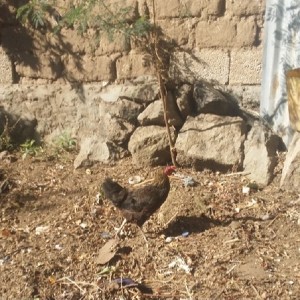Predation and theft: the standing threats of the scavenging chicken production system

Accepted: October 26, 2023
All claims expressed in this article are solely those of the authors and do not necessarily represent those of their affiliated organizations, or those of the publisher, the editors and the reviewers. Any product that may be evaluated in this article or claim that may be made by its manufacturer is not guaranteed or endorsed by the publisher.
Authors
Indigenous Village Chickens (IVCs) obtain most of their feed from a scavenging feed resource base. Free roaming makes IVCs express their instincts at will, which could enhance their welfare. Free-ranging has also endowed IVCs with excellent explorative behavior. However, predators might have also co-evolved, which necessitates special interference from smallholder farmers to reduce the adverse impact of predators. This study identified the main predators of IVCs and the evading strategies adopted by smallholder farmers. This cross-sectional study involved a general interview with 119 smallholder farmers. The prevalence of enset, Ensete ventricosum (Welw.) Cheesman, around the farmer's backyard can impose a significant threat because it shelters terrestrial predators. Smallholder farmers evade predators through patrolling, guarding dogs, fencing, confinement, and, in rare cases, killing. An unplanned conversation made with an informant revealed that men with some clerical ability but no priesthood title incantate on whole grains of black wheat. When the chicken is fed this grain, reportedly, the aerial predator becomes weak and cannot catch the chicken. The agroecological zone has a statistically significant impact on the proportions of predators encountered and the types of evading strategies adopted by smallholder farmers. This association entails the need for developing agroecology-based predator-evading methods. Predators' evading methods, however, need to be refined further to reduce the recurrent losses of chickens. The threats associated with predators' challenges must be thoroughly investigated to advance their evading strategies. Another problem that leads to the significant loss of family poultry is theft. In addition to the strategies used to avoid predators, which may also apply to controlling theft, the legal system must be well-organized to punish such misdeeds.
How to Cite

This work is licensed under a Creative Commons Attribution-NonCommercial 4.0 International License.
PAGEPress has chosen to apply the Creative Commons Attribution NonCommercial 4.0 International License (CC BY-NC 4.0) to all manuscripts to be published.

 https://doi.org/10.4081/jbr.2023.11619
https://doi.org/10.4081/jbr.2023.11619



